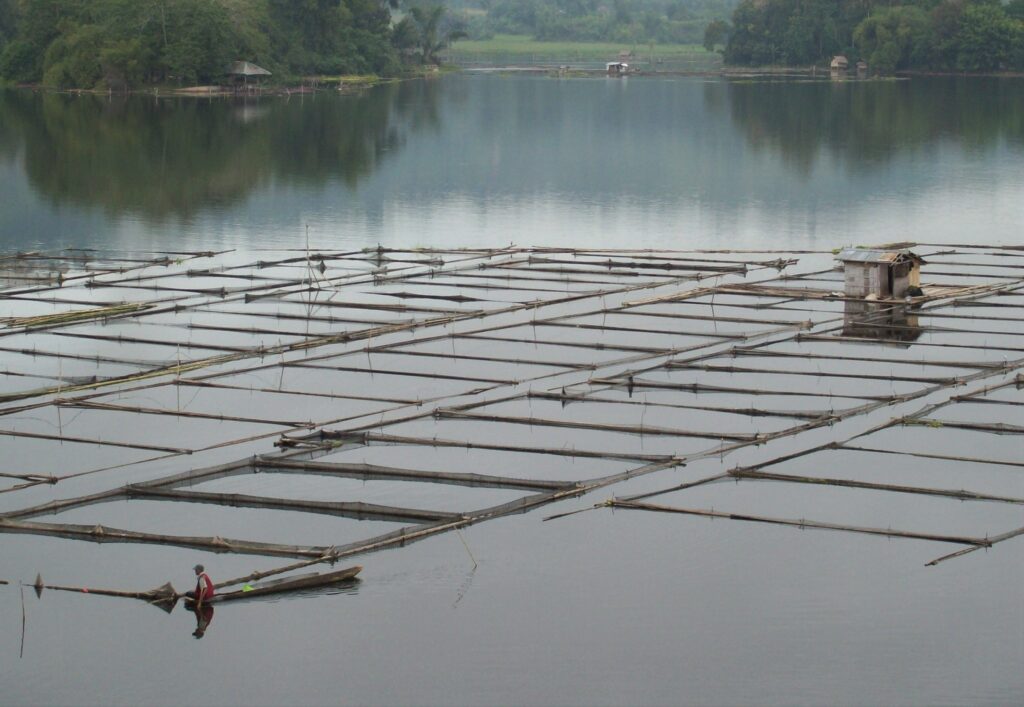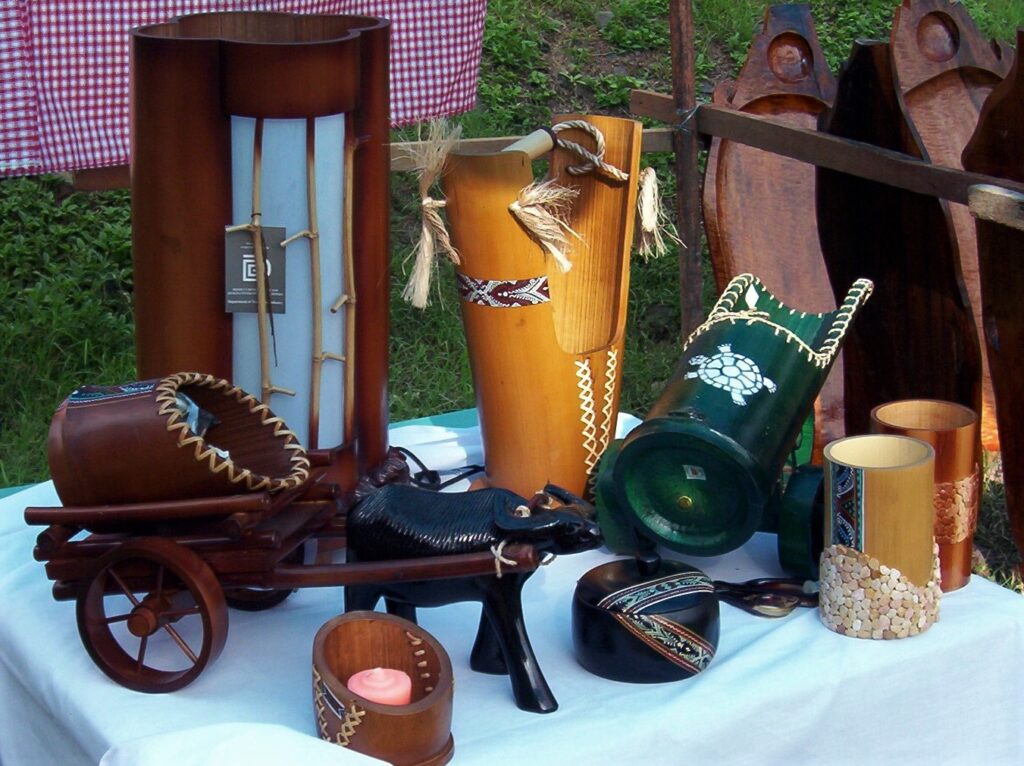Text and Photos by Henrylito D. Tacio
If there’s one crop Filipino farmers need to plant on their farms, it’s bamboo. Aside from helping save the forest from further denudation, growing bamboo is also a profitable venture.
“If the bamboo survives, you are assured of money for the next 30 to 50 years,” says a bamboo grower. Another good thing: the price of bamboo does not suffer from severe fluctuations, unlike pork and chicken. In fact, they are priced depending on the diameter, volume and distance traveled.
Right now, the Philippines now has an estimated 104,000 hectares planted to bamboo. It generates a value of $60 million annually. With 5.59 million hectares considered arable lands, the country can expand its bamboo area to 400,000 hectares. Such an area can yield a whopping $3 billion or about P150 billion.
“The industry can employ one million rural folks including indigenous people that can be organized into cooperatives,” said the Philippine Bamboo Industry Development Council (PBIDC).
A study conducted by the International Network for Bamboo and Rattan (INBAR) showed that each 10-hectare area can generate a net income of P922,995 per bamboo worker per year.
The Philippines is the fifth largest bamboo and rattan product exporter in the world and faces even bigger export potential. As such, the council said the government should support bamboo planting considering its versatility in use.
While it has extensive use as raw material in many industries, the country’s bamboo export actually slowed from a high of 106,000 kilos in 2011 to 35,000 in 2015 and even further lower to 8,00 kilos in 2018, according to Statista.com. Exports just picked up to 66,000 in 2020.
There are over 1,500 species of bamboo in the world. In the Philippines, several bamboo species are grown, but giant bamboo (known in the science world as Dendrocalamus asper) is the most preferred commercially. Other important species are kauayan-tinik, kauayan-kiling, bayog, botong, bolo, anos, and buho.
One reason why growing bamboo is profitable is that it grows so fast. In China and Japan, the Miso variety of bamboo can grow up to one meter in 24 hours. Once it stops growing, secondary branches start growing from the nodes.
“What makes bamboo a versatile crop is its regenerative characteristic where several shoots grow to replace a harvested pole,” said Rod Bioco, president of Bukidnon Giant Bamboo Resourced Corporation and the man who sets up the bamboo processing facility in Malaybalay City.
Among the end products the corporation produced are treated and dried bamboo slats (intermediate raw material), laminated bamboo lumber/beams and boards, and finished products (like doors, jambs, mouldings, and furniture).
“Most of these materials are now manufactured in China and imported by construction supply companies,” said former Agriculture Secretary Emmanuel Piñol, who was then the head of the Mindanao Development Authority when he visited the bamboo corporation.


In his social media account, Piñol confirmed the profitability of bamboo growing, particularly giant bamboo. The development cost up to three years of rearing is P50,000 per hectare (100 to 150 clumps). According to the prospectus, initial harvest can be started after 5-6 years, but commercial harvesting starts in the seventh year. Poles should be 3-5 years old.
Farmers get a net income of P90-P120 per pole. The yield is 120-150 poles per hectare per year or around 120-150 metric tons per hectare per year. Some farms get 1,500 to 2,000 poles per hectare per year (15-20 poles per clump).
The prospectus said harvesting crew get P50-P80 per pole, depending on the terrain, thus generating an income of more than P8,000 per 16-metric truckload per 4-5 days per crew of 6-7 people.
Ideally, the supply is within a 30-kilometer radius to control trucking costs (less than P50 per pole or P0.50 per kilogram). The plant capacity is 60,000 metric tons per year (two shifts) or 600,000 poles per year, which can be supplied from just 600 hectares of giant bamboo.
The buying price is P2.50 per kilogram on a delivered/unloaded basis.
The production capacity, when finished, is 200 metric tons per day or 2,000 of fresh poles (3-5 years old at 40%mc), yielding 24,000 board feet per day. The investment is P150 million.
There’s no need to worry about its marketability. Used to be known as “poor man’s timber,” bamboo is now gracing many high-end homes, hotels, and offices around the world. After all, bamboo poles are incredibly strong and sturdy and are often used for construction and building. Its tensile strength is measured to be 28,000 pounds per square inch.
“The global bamboo market size was valued at $68.8 billion in 2018 and is expected to grow at a compound annual growth rate of 5.0% from 2019 to 2025 to reach $98.30 billion by 2027,” said the website grandviewresearch.com.
“Growing investments focused on infrastructure development, increasing use of sustainable building/construction resources, and rising consumer awareness regarding the uses and benefits of bamboo are expected to drive the market growth over the forecast period,” the website added.
There are several reasons why bamboos have become popular in recent years. In the world market, bamboo is more preferred over timber as the former is easier to harvest, transport and are relatively affordable.
“(Bamboos) are water-resistant by nature and offer high durability,” the aforementioned website said. “These benefits result in the sustainable use of bamboo in applications such as furniture, shelter, and handicraft products. They are also used to produce flooring, charcoal, mats/screens, and woven products.”
The Philippines has long been a pioneer of industrial bamboo design. In the early 1950s, Antonio de Leon designed a single-engine, light experimental aircraft called XL- Maya. It used a type of woven bamboo.
The Department of Transportation has also spearheaded the bamboo mobile, a type of jeepney. In 2017, designer Christopher Paris Lacson crafted the Banatti motorcycle, whose body is made of highly durable, elegant-looking, light-weight bamboo.
Bamboo is also used in the manufacture of musical instruments like horns, clarinets, saxophones, flutes, piccolos, xylophones, and drums. The world-famous bamboo organ at the Roman Catholic Church of Las Piñas is a historic example of the importance of bamboo.
There are also sophisticated uses of bamboo – charcoal for electric batteries, liquid diesel fuel obtained by distillation, and enzymes and media for shoot extracts used for culturing disease-causing bacteria. The white powder produced on the outer space of young culms for the isolation of a crystalline compound is medically useful.
Bamboo is indispensable in the fishing and banana industry. Fishermen likewise use bamboo as a material for making rafts, fishing rods, outriggers for bancas, and for fish pens. In salt-water areas, bamboo is used as stakes in the culture of mussels and oysters.

Bamboo is edible. The young shoots – called labong – are harvested while they are still soft. They are a good source of vitamins and minerals. Studies conducted by respected nutrition experts claim that bamboo shoot is low in carbohydrates and crude fat, and it has plenty of crude fiber, making it an ideal vegetable for people who want to lose weight. Eighteen amino acids are reportedly present in bamboo shoots. Just a health warning: shoots of some species contain toxins that need to be leached or boiled out before they can be eaten safely.
Aside from the economic returns, bamboo has also become popular as a crop that could help control erosion. The roots of giant bamboo have been proven to efficiently absorb excess water and bind the soil together, thus reducing erosion, according to a study done by a team of researchers from Central Mindanao University (CMU).
The study was done at the Taganibong Watershed in Musuan, Bukidnon. Soil erosion was measured every time it rains through the erosion bar method. In two years, data showed that giant bamboo cuts soil losses by 75% or 22.66 tons per hectare per year compared with 90.12 tons per hectare per year in open areas. Displaced soil particles are lessened by 80%, while a river near a giant bamboo plantation decreased water discharge by 85%.
“Bamboo foliage also helps in intercepting raindrops and minimizing the impact to the soil surface,” the study said. “Bamboo litters also shield the soil from the impact of raindrops as decomposed litter improves soil structure and promotes water entry by 40%. This further reduces surface flow, translating to minimize soil erosion and landslides.”
Planting bamboo also helps in cooling the surrounding where it is grown. It is scientifically proven that bamboo can release 35% more oxygen than most trees. Studies have shown that bamboo cools down the surrounding air by up to 8 degrees in summer. This acts as a natural air conditioner for the farm and any buildings in proximity.
Bamboos can also help mitigate the impacts of climate change. Experts say bamboos can absorb huge amounts of carbon dioxide, a primary greenhouse gas. A hectare of bamboo, studies show, sequesters 12 tons of carbon dioxide.
“Bamboo plants store carbon at a fast rate, and bamboo products can effectively ‘displace’ more emissions-intensive materials such as cement, steel, and plastic,” said INBAR’s Hans Friedrich.
Recent INBAR research suggests (well-managed) bamboo (plantation) can store 200 to 400 tons of carbon per hectare per year. “With such high carbon storage rates, there is clearly potential for countries to integrate bamboo into their climate mitigation plans,” Friedrich said.
If fully developed, the bamboo industry can be another good source of livelihood to our local farmers.
“We have an abundance of bamboo but we don’t know what to do with it,” says Jethro P. Adang, the director of the Mindanao Baptist Rural Life Center (MBRLC) Foundation, Inc. in Kinuskusan, Bansalan, Davao del Sur. “It is so common that we ignore its potential. Other countries have already seen not only the beauty but the potentials of bamboo.”

